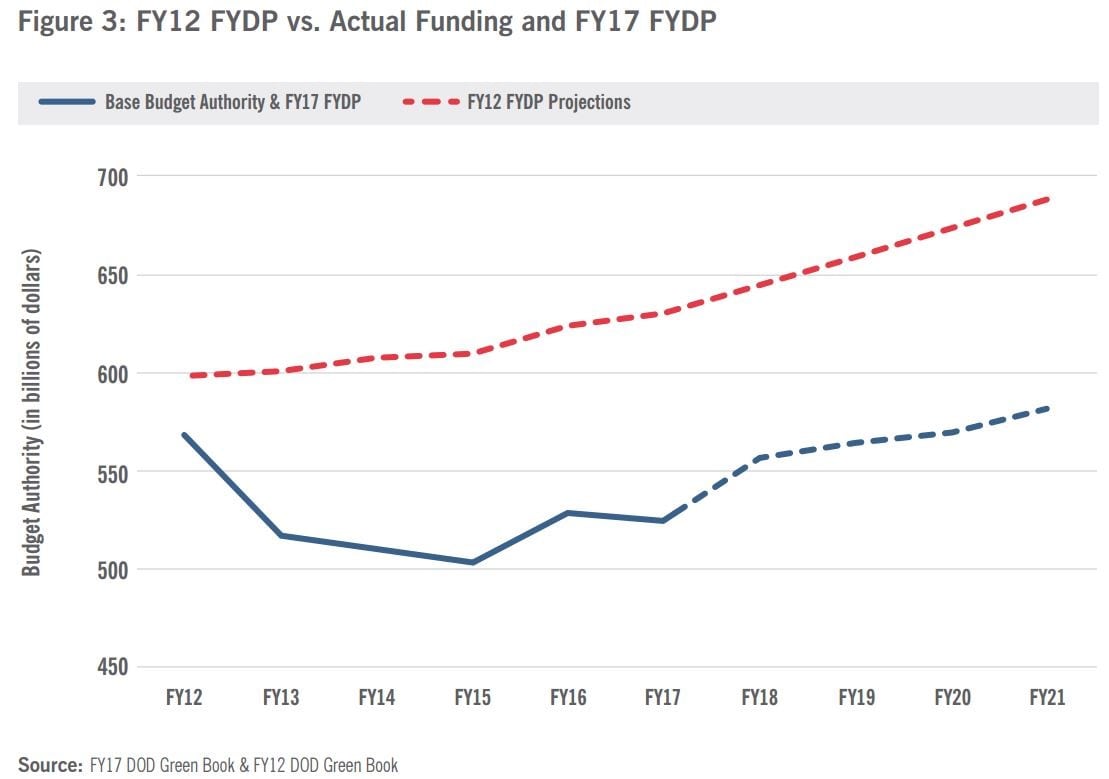Continuing Resolution Will Have Negative Impact on Government Operations
Squeezed between the spending sequester caps enacted in 2011 and eight consecutive continuing resolutions on annual appropriations, America’s defense forces face loss of superiority over potential international adversaries.
At this week’s House Armed Services Committee hearing, this warning came loud and clear from the Joint Chiefs of Staff who emphasized that failure to approve a full-year Department of Defense appropriations bill for FY2017, and the accompanying $30 billion defense supplemental, will allow foreign adversaries to eclipse much of America’s air, naval and ground superiority.
Army Chief of Staff Gen. Mark Milley told the committee, “Candidly, the failure to pass a budget, in my view as both an American citizen and the chief of staff of the United States Army, constitutes professional malpractice.”
Congress faces serious problems in trying to pass both the FY2017 budget for the remainder of this fiscal year and approving a FY2018 budget.
The current FY2017 Continuing Resolution expires April 28. If not extended or replaced by congressionally approved individual spending bills, the federal government will once again experience a shutdown.
Complicating Congress’ task are new spending requests from the Trump administration, including a $30 billion defense and national security supplemental and an $18 billion cut in domestic spending. Members of both parties in both chambers have expressed reservations about these supplemental recommendations.
As we have written before , Congress faces serious problems in trying to pass both the FY2017 budget for the remainder of this fiscal year and approving a FY2018 budget by the October 1 start of the new fiscal year.
Adding more pressure to the fiscal challenge is the need to extend the federal debt ceiling in the fall, pass a FY2018 Congressional Budget Resolution, and extend certain expiring domestic programs.
The possibility of a government shutdown over spending priorities seems increasingly possible as the April 28 deadline approaches, and a greater probability at the beginning of the next fiscal year.
For the Defense Department, among the major consequences that the Joint Chiefs warned could occur unless the FY2017 defense spending bill and accompanying supplemental pass are the following:
Air Force
- Failure to achieve Air Force end strength increases mandated by law, negatively impacting the growth of remotely piloted aircraft, cyberspace operations, intelligence, surveillance and reconnaissance, and nuclear command, control, and communications
- Reduced training and maintenance work for pilots in non-deploying squadrons
- Freezing all Air Force restoration and modernization projects, effectively cancelling 301 projects at 78 Air Force installations, including 51 directly related to readiness
- Delays to the planned launch of GPSIII Satellite Vehicle 1
- Delayed certification of the F-35A for its nuclear mission
Army
- Crippled ability to close critical capability and readiness gaps, including ability to meet larger troop demands and shutdown of training for five Army Brigade Combat Teams
Marine Corps
- Seriously degrade Marine operations in flight training, with termination of flight operations this July
- Delay construction of a Marine amphibious ship, reduce aviation munitions including laser Maverick missiles, Hellfire missiles, and recovery of Laser Joint Direct Attack Munitiions
- Seriously delay a large number of ground and other aviation programs
Navy
- The Navy will have to cut programs in order to shift more than $500 million to pay raises, housing allowances, and other cost of living adjustments
- End purchase of many new ships and missiles
- Delay new ways to address growing undersea warfare threats and creation of new and advanced cyber tools
- Increase production rates or buy parts for new aircraft carriers, early warning aircraft, armed helicopters, advanced missiles, undersea sensors and arrays, missile decoys, and radar enhancements
In addition to these risks, defense spending has already been facing downward pressure due to the sequestration caps enacted by the 2011 Budget Control Act, which took effect in FY2012. The chart below shows how the sequestration caps have slashed almost $900 billion from the FY2012 defense budget proposed by Secretary of Defense Bob Gates under President Obama.

Share
Read Next
Support Research Like This
With your support, BPC can continue to fund important research like this by combining the best ideas from both parties to promote health, security, and opportunity for all Americans.
Give NowRelated Articles
Join Our Mailing List
BPC drives principled and politically viable policy solutions through the power of rigorous analysis, painstaking negotiation, and aggressive advocacy.